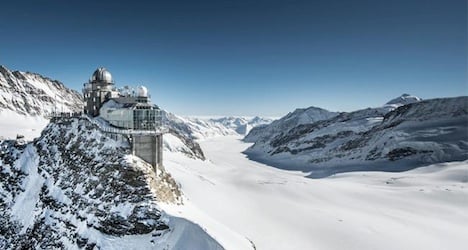Meteorologists earlier said the mercury at the mountain's weather station hit an all-time high for the month of November of 7.2C (45 degrees Fahrenheit).
But MeteoSwiss said a sensor was incorrectly recorded and a parallel measurement registered a much lower maximum temperature of 3.7 degrees.
The weather station is situated at an altitude of 3,580 metres on the mountain.
The correction means the previous temperature record at the station of 4.7C, measured in 1992, still stands.
Jungfrau, with a summit of 4,158 metres, figures among the tallest mountains in the Swiss Alps and is one of Switzerland's top tourist destinations.
Only slightly below the weather station, at an altitude of 3,454 metres, it boasts the highest-altitude railway station in Europe, with a view onto the mighty Aletsch — the largest glacier in the Alps.
Temperatures have been unusually high at lower altitudes in Switzerland with records set for November in various cities and mountain areas over the weekend.
But, on the Jungfrau, at least, it wasn't as warm as once thought.




 Please whitelist us to continue reading.
Please whitelist us to continue reading.
Member comments